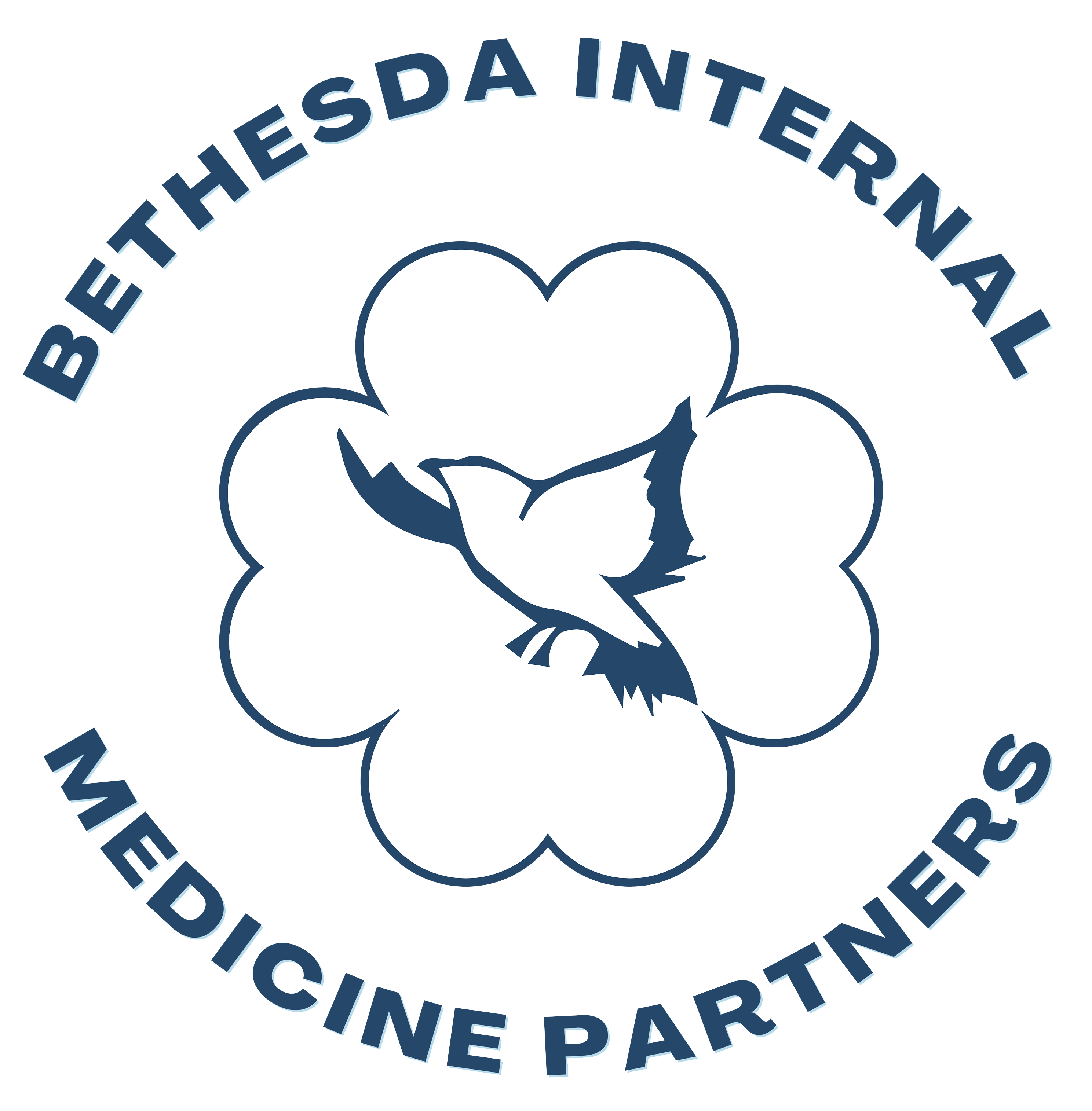What are vitamins?
Nutrients that our body does not make on its own. Therefore, we must obtain them from the foods we eat, or through a supplement
They are essential for providing good health and are necessary for many life functions.
What are supplements?
Synthetic or natural substances which can be purchased in the form of:
Pills
Tablets
Capsules
Wafers
Powders
Liquids
Vitamins, Supplements & Your Health
Vitamin industry is a multi-billion dollar industry
More than 50% of the population takes at least one supplement
Some describe it as “the cheapest health insurance a person will ever buy”
Most common: Multivitamins, Calcium, Vitamin D, Fish Oil, Probiotics
True or False – Even if you don’t have vitamin deficiencies – it still can’t hurt to take vitamin supplements. False- we could exceed our requirements especially with fat-soluble vitamins. (A, D, E, K)
Should I get my vitamins from food or supplements?
A well balanced diet is the best way to meet daily nutritional needs.
If you closely follow the “MyPlate” then you should meet the RDA (Recommended Dietary Allowances) for vitamins and nutrients.
Supplements are not meant to replace a healthy diet.
Food provides calories and energy- it is possible much of health benefits of vitamins comes from whole foods.
RDA’s are the recommended amounts of nutrients we should have each day. Many of the health benefits that comes from vitamins may be a result of many other nutrients present in the foods such as fiber, antioxidants, and are better absorbed than single nutrients themselves in a pill form.
Fat-soluble
Vitamin A (retinol, retinoic acid) is a nutrient important to vision, growth, cell division, reproduction and immunity.
Found in animal and plant sources
Fat-soluble vitamins are absorbed along with fats in the diet and are stored in the body’s fatty tissue and in the liver. Vitamin A is a fat-soluble vitamin, which means that when a person consumes more than the body needs, it’s stored in the fat cells and liver.
Vision
o Generates pigments for the retina
o Maintains surface lining of eyes
What does it do?
Bone growth
Reproduction
Cell division and differentiation, helps maintain healthy endothelial cells (those lining the body’s interior surfaces)
Healthy Skin
Regulate Immune System (stimulates production and activity of white blood cells)
Where does it come from?
Animal Sources
Eggs
Meat
Cheese
Milk
Liver
Kidney
Cod
Halibut fish oil
Plant Sources
Carrots
Sweet Potatoes
Cantaloupe
Pink Grapefruit
Apricots
Broccoli
Spinach
Pumpkin
Signs of Deficiency
Night blindness
Decreased resistance to infections
Extremely dry skin, hair and nails
Vitamin A deficiency is rare in Western countries but can occur due to conditions that interfere with normal digestion can lead to vitamin A malabsorption such as celiac disease, Crohn’s disease, cirrhosis, alcoholism, and cystic fibrosis.
Toxicity
Vitamin A toxicity may be more common in the U.S. than a deficiency, due to high doses of preformed vitamin A (retinol) found in some supplements.
Vitamin A is also fat-soluble, meaning that any amount not immediately needed by the body is absorbed and stored in fat tissue or the liver. If too much is stored, it can become toxic
Vision changes such as blurry sight
Bone pain
Nausea and vomiting
Dry skin
Sensitivity to bright light like sunlight
The tolerable upper intake of 3,000 mcg of preformed vitamin A, more than three times the current recommended daily level, is thought to be safe. However, there is some evidence that this much preformed vitamin A might increase the risk of bone loss, hip fracture, or some birth defects. Another reason to avoid too much preformed vitamin A is that it may interfere with the beneficial actions of vitamin D.
Foods High In Vitamin A
Retinol (vitamin A1):
- Beef Liver — 713% DV per serving
- Lamb Liver — 236% DV per serving
- Liver Sausage — 166% DV per serving
- Cod Liver Oil — 150% DV per serving
- King Mackerel — 43% DV per serving
- Salmon — 25% DV per serving
Beta-Carotene:
- Carrot (1 raw) 20,250 IU (410% DV)
- Carrot juice (1/2 c) 12,915 IU (260% DV)
- Mango (1 raw) 8,050 IU (160% DV)
- Sweet Potatoes (1/2 c) 7,430 IU (150% DV)
- Spinach, boiled (1/2 c) 7,370 IU (150% DV)
- Cantaloupe (1 c) 5,160 IU (100%DV)
- Vegetable Soup (1 c) 3,005 IU (60% DV)
Water-soluble vitamins are found naturally in some foods, added to foods, and sold as a supplement.
Thiamin plays a vital role in the growth and function of various cells.
Only small amounts are stored in the liver, so a daily intake of thiamin-rich foods is needed.
Because thiamin is involved in several basic cell functions and the breakdown of nutrients for energy, a deficiency can lead to various problems in the brain and heart that require a constant supply of energy.
Food Sources
Thiamin is found naturally in meats, fish, and whole grains. It is also added to breads, cereals, and baby formulas.
- Fortified breakfast cereals
- Pork
- Fish
- Beans, lentils
- Green peas
- Enriched cereals, breads, noodles, rice
- Sunflower seeds
- Yogurt
- A thiamin deficiency in the U.S. is rare, as most people meet the RDA through their diets.
Did You Know?
- Thiamin is destroyed with high-heat cooking or long cooking times. It also leaches into water and will be lost in any cooking or soaking water that is thrown out. It may also be removed during food processing, such as with refined white bread and rice. This is why thiamin is enriched, or added back, to many breads, cereals, and grains that have undergone processing.
RDA:
- men ages 19 and older is 1.2 mg ¾ cup oatmeal
- women ages 19 and older 1.1 mg 2.5 ounces fish
¾ cup beans
1 orange
½ cup edamame
UL: A Tolerable Upper Intake Level (UL) is the maximum daily dose unlikely to cause adverse side effects in the general population. There is no UL for thiamin due to a lack of reports showing negative effects from high thiamin intakes.
Important in:
- energy production
- carbohydrate, fat, and protein metabolism
- formation of antibodies and red blood cells
- cell respiration
- maintenance of good vision, skin, nails, and hair
- alleviating eye fatigue
- Bacteria in the gut can produce small amounts of riboflavin, but not enough to meet dietary needs.
- Riboflavin is a key component of coenzymes involved with the growth of cells, energy production, and the breakdown of fats, steroids, and medications
- Most riboflavin is used immediately and not stored in the body, so excess amounts are excreted in the urine. [2] An excess of dietary riboflavin, usually from supplements, can cause urine to become bright yellow.
Sources of B-2
Large amounts in
dairy
eggs
meats
Small amounts in
leafy green vegetables
enriched grains
Recommendations
Men 14-70 1.3 mg/day
Women 14-70 1.0 mg/day
71+ Larger doses
1 cup raisin bran
1 cup milk
1 egg
OR
1 small extra lean hamburger
1 cup plain yogurt
0.5 cup fresh cooked spinach
1 cup cottage cheese
A toxic level of riboflavin has not been observed from food sources and supplements. The gut can only absorb a limited amount of riboflavin at one time, and an excess is quickly excreted in the urine. Therefore, a Tolerable Upper Intake Level for riboflavin has not been established.
Two Types
o Niacinamide (Nicotinamide)
does not decrease LDL
o Niacin (Nicotinic Acid)
highly toxic in large doses
o The body can also convert tryptophan—an amino acid—to nicotinamide.
o Niacin is water-soluble so that excess amounts the body does not need are excreted in the urine.
o Niacin supplements are also available as a prescription medicine that is used to treat high cholesterol; (lowers TG and increases HDL) this typically comes in an extended-release form of nicotinic acid that allows slower, more gradual absorption so that it does not cause flushing.
o Because of the very high doses of nicotinic acid needed, up to 2,000 mg daily, this supplement should only be used when monitored by a physician.
Recommendations
Men 14+ 16 mg/day
Women 14+ 14 mg/day
1 cup rice
4 oz. broiled salmon
1 tbsp peanut butter
1 bagel
OR
1 small extra lean hamburger
0.5 cup grape nuts cereal
Niacin is measured in milligrams (mg) of niacin equivalents (NE). One NE equals 1 milligram of niacin or 60 mg of tryptophan.
UL: The Tolerable Upper Intake Level is the maximum daily intake unlikely to cause harmful effects on health. The UL for niacin for all adults 19+ years is 35 milligrams.
Toxicity
Toxicity when eating foods containing niacin is rare, but can occur from long-term use of high-dose supplements.
A reddened skin flush with itchiness or tingling on the face, arms, and chest is a common sign. Flushing occurs mainly when taking high-dosage supplements in the form of nicotinic acid, rather than nicotinamide.
Impaired glucose tolerance and inflammation of liver in severe cases (at very high doses of 3,000-9,000 mg daily for several months/years).
Did You Know?
- Many B vitamins are thought to help increase energy, including niacin. Because niacin is water-soluble (less risk of building up in the body to a toxic level), many people don’t think twice about taking a supplement that may contain 100 times the RDA for the vitamin.
- Although niacin assists several enzymes in converting food into ATP, a form of energy, taking doses well beyond the RDA will not offer a special boost in energy levels. Eating a balanced diet with a variety of foods is often all that is needed to obtain niacin’s energy-boosting benefit.
It is used to make coenzyme A (CoA), a chemical compound that helps enzymes to build and break down fatty acids
Bacteria in the gut can also produce some pantothenic acid but not enough to meet dietary needs.
B5 has been studied for a potential role in reducing cholesterol levels in people who have dyslipidemia
RDA
Men and women 19 + 5mg daily
How can you get this amount each day?
¼ cup sunflower seeds (2.4mg)
3 oz chicken breast (1.3mg)
½ avocado (1mg)
1 egg (0.7mg)
Food Sources
- Fortified cereals
- Organ meats (liver, kidney)
- Beef
- Chicken breast
- Mushrooms
- Avocado
- Nuts, seeds
- Dairy milk
- Yogurt
- Potatoes
- Eggs
- Brown rice
- Oats
- Broccoli
Because pantothenic acid is found in a wide variety of foods, a deficiency is rare
A toxic level of pantothenic acid has not been observed from food sources
A toxic level of pantothenic acid has not been observed from food sources
Important in:
Production of red blood cells
conversion of tryptophan to niacin (B-3)
immunity
nervous system functions
reducing muscle spasms, cramps, and numbness
maintaining proper balance of sodium and phosphorous in the body
Pyridoxal 5’ phosphate (PLP) is the active coenzyme form
PLP is a coenzyme that assists more than 100 enzymes to perform various functions, including the breakdown of proteins, carbohydrates, and fats; maintaining normal levels of homocysteine (since high levels can cause heart problems); and supporting immune function and brain health.
Recommendations
Men 14-50 1.3 mg/day
Men 50+ 1.7 mg/day
Women 14-18 1.2 mg/day
Women 19-50 1.3 mg/day
Women 50+ 1.5 mg/day
1 chicken breast
0.5 cup cooked spinach
1 cup brown rice
OR
1 baked potato with skin
1 banana
4 oz. lean sirloin
Toxicity
A Tolerable Upper Intake Level (UL) is the maximum daily dose unlikely to cause adverse side effects in the general population. The UL for adults 19 years and older is 100 mg daily, with slightly lesser amounts in children and teenagers.
This amount can only be achieved by taking supplements.
Even higher amounts of vitamin B6 supplements are sometimes prescribed for medical reasons, but under the supervision of a physician as excess vitamin B6 can cause toxicity.
Warnings
High doses of B-6 may be recommended to treat PMS, carpal tunnel syndrome, and sleep disorders, but continued use of high doses may result in permanent nerve damage.
Pregnant women should always consult their doctor before taking this supplement and all others.
It is quite unlikely to reach a toxic level of vitamin B6 from food sources alone. Vitamin B6 is a water-soluble vitamin so that unused amounts will exit the body through the urine. However, a toxic level can occur from long-term very high dose supplementation of greater than 1,000 mg daily. Symptoms usually subside after stopping the high dosage.
Deficiency
Microcytic anemia
confusion
depression
Skin conditions
Lowered immunity
A vitamin B6 deficiency most often occurs when other B vitamins in the body are low, particularly vitamin B12 and folic acid.
Who is at risk?
Alcoholics and those with kidney disease
Autoimmune intestinal disorders like celiac disease, ulcerative colitis, and Crohn’s disease
Autoimmune inflammatory disorders such as rheumatoid arthritis
Plays a vital role in assisting enzymes to break down fats, carbohydrates, and proteins in food.
Helps to regulate signals sent by cells and the activity of genes
Adequate Intake:
Men and Women 19 + 30mcg
FOOD SOURCES:
Beef liver
Eggs (cooked)
Salmon
Avocados
Pork
Sweet potato
Nuts, seeds
How can you get enough each day?
2 eggs (20mcg)
3 oz salmon (5mcg)
½ cup sweet potato (2.4mcg)
¼ cup almonds (1.5mcg)
¼ cup sunflower seeds (2.6mcg)
An RDA (Recommended Dietary Allowance) does not exist for biotin because there is not enough evidence to suggest a daily amount needed by most healthy people. Instead, there is an AI (Adequate Intake) level, which is assumed to ensure nutritional adequacy.
UL: A Tolerable Upper Intake Level (UL) is the maximum daily dose unlikely to cause adverse side effects in the general population. There is no UL for biotin due to a lack of reports showing negative effects from very high intakes.
Important in:
proper nerve function
production of red blood cells
metabolizing fats and proteins
prevention of anemia
DNA reproduction
energy production
synthesis of hormones and neurotransmitters
B12 is an important cofactor in the citric acid cycle: the central cycle in the production of energy in the mitochondria. When B12 is deficient, the conversion of fat and ketones into energy is reduced, plus harmful MMA acid is generated, which severely impairs energy production from glucose and glutamic acid.
Detoxification
Vitamin B12 itself is a major antioxidant and detoxifying agent of many chemical substances. Oxidative stress inhibits cell functions and energy production. A deficiency of B12 can also lead to a glutathione deficiency, which is the most essential antioxidant in the human body. The resulting oxidative stress significantly decreases energy levels.
Recommendations:
Men and Women 14+ 2.4mcg
1 chicken breast
1 hard-boiled egg
1 cup plain low-fat yogurt
OR
1 cup milk
1 cup raisin bran
Vegetarians need to look for fortified sources (soy milk, supplements).
Elderly often have trouble absorbing
UL: A Tolerable Upper Intake Level (UL) is the maximum daily dose unlikely to cause adverse side effects in the general population. No upper limit has been set for vitamin B12, as there is no established toxic level
B-12 Deficiency:
Can cause: anemia, nerve damage, fatigue/weakness, memory loss/confusion, dementia, depression, seizures.
All cells require a constant supply of small amounts of B12 in order to function optimally.
The main causes of B12 deficiency are thus gastrointestinal problems and excessive strain through stress and pollution. They are the consequences of both widespread poor diets and a generally unhealthy lifestyle in the modern world, which often lead to digestive disorders.
Due to these multiple functions of B12, a deficiency can lead to a whole host of sometimes severe physical and mental symptoms – ranging from fatigue and depression to severe anemia and nerve damage.
The impaired formation of neurotransmitters and hormones can lead to mood swings and mental and cognitive disorders.
The disruption of blood formation and DNA synthesis can lead to pernicious anemia and severe impairments of the metabolism.
The increase in homocysteine levels can cause cardiovascular disease, retinal damage and vascular dementia.
Nerve damage can cause inexplicable pain, paralysis and coordination disorders.
Demyelination damage to the spinal cord causes symptoms similar to multiple sclerosis (MS).
Generally, up to 1000 mcg a day of an oral tablet to treat a deficiency is considered safe.
Who is at risk?
People aged 50+
Those with stomach and intestinal disorders
People on certain medication
Alcoholics and drug addicts
Vegans and vegetarians
What is it?
Vitamin E is a fat-soluble vitamin with several forms, but alpha-tocopherol is the only one used by the human body.
Antioxidant
Reduce the energy of the free radical
Reduce production of free radical in certain situations
enhances immune function and prevents clots from forming in heart arteries.
Vitamin E is the name given to a family of eight molecules,
Alpha-tocopherol, one of the eight isoforms of vitamin E, is the most potent fat-soluble antioxidant known in nature.
For years α-tocopherol was thought only to function as a scavenger of lipid peroxyl radicals, specifically, oxidized low-density lipoprotein (oxLDL), thereby serving as a chief antioxidant for the prevention of atherosclerosis.
In recent years, the many roles of α-tocopherol have been uncovered, and include not only antioxidant functions, but also pro-oxidant, cell signaling and gene regulatory functions.
Dietary vitamin E is obtained mainly from plant sources including sunflower seeds, olive oil and almonds, which contain high amounts of α-tocopherol.
Where does it come from?
wheat germ oil
vegetable oils
nuts and seeds
whole grains
egg yolk
leafy green vegetables
Recommended Daily Allowances (RDA):
Vitamin E for males and females ages 14 years and older is 15 mg daily (or 22 international units, IU), including women who are pregnant. Lactating women need slightly more at 19 mg (28 IU) daily.
MEDICATION INTERACTIONS
Blood Thinners Vitamin E may reduce blood clotting and result in thinner blood. If taken while on a blood thinner, it may put you at increased risk of bleeding.
Chemo and Radiation Therapy While undergoing certain cancer treatments, antioxidants may reduce the effectiveness of those treatments.
Seizure Medications Some medications used for treating epilepsy and other seizure disorders may reduce the levels of vitamin E absorbed in the body.
Always speak with a healthcare provider before starting a new supplement
Vitamin E Deficiency:
Because vitamin E is found in a variety of foods and supplements, a deficiency in the U.S. is rare.
People who have digestive disorders or do not absorb fat properly (e.g., pancreatitis, cystic fibrosis, celiac disease) can develop a vitamin E deficiency.
Can cause:
Retinopathy (damage to the retina of the eyes that can impair vision).
Peripheral neuropathy (damage to the peripheral nerves, usually in the hands or feet, causing weakness or pain).
Ataxia (loss of control of body movements).
Decreased immune function.
Vitamin E Toxicity:
There is no evidence of toxic effects from vitamin E found naturally in foods.
Most adults who obtain more than the RDA of 22 IU daily are using multivitamins or separate vitamin E supplements that contain anywhere from 400-1000 IU daily.
There have not been reports of harmful side effects of supplement use in healthy people. However, there is a risk of excess bleeding, particularly with doses greater than 1000 mg daily or if an individual is also using a blood thinning medication such as warfarin. For this reason, an upper limit for vitamin E has been set for adults 19 years and older of 1000 mg daily (1465 IU) of any form of tocopherol supplement.
How do I get enough Vitamin E from my diet?
Wheat germ 1tbsp (20.3mg).
Sunflower seeds 1 oz (7.4mg).
Almonds 1 oz (6.8mg).
Folate helps to form DNA and RNA and is involved in protein metabolism.
It plays a key role in breaking down homocysteine, an amino acid that can exert harmful effects in the body if it is present in high amounts.
Folate is also needed to produce healthy red blood cells and is critical during periods of rapid growth, such as during pregnancy and fetal development.
RDA:
Men and women ages 19 years and older should aim for 400 mcg.
Pregnant and lactating women require 600 mcg and 500 mcg, respectively.
People who regularly drink alcohol should aim for at least 600 mcg DFE of folate daily since alcohol can impair its absorption.
UL:
The UL for adults for folic acid from fortified food or supplements (not including folate from food) is set at 1,000 mcg a day.
Food sources:
Dark green leafy vegetables (turnip greens, spinach, romaine lettuce, asparagus, Brussels sproutss, broccoli)
Beans
Peanuts
Sunflower seeds
Fresh fruits, fruit juices
Whole grains
Liver
Seafood
Eggs
Fortified foods and supplements
A wide variety of foods naturally contain folate, but the form that is added to foods and supplements, folic acid, is better absorbed.
In January 1998, the U.S. Food and Drug Administration required food manufacturers to add folic acid to foods commonly eaten, including breads, cereals, pasta, rice, and other grain products, to reduce the risk of neural tube defects. This program has helped to increase the average folic acid intake by about 100 mcg/day.
Folic Acid Deficiency – Who is at risk:
Alcoholism. Alcohol interferes with the absorption of folate and speeds the rate that folate breaks down and is excreted from the body. People with alcoholism also tend to eat poor-quality diets low in folate-containing foods.
Pregnancy. The need for folate increases during pregnancy as it plays a role in the development of cells in the fetus.
Intestinal surgeries or digestive disorders that cause malabsorption. Celiac disease and inflammatory bowel disease can decrease the absorption of folate. Surgeries involving the digestive organs or that reduce the normal level of stomach acid may also interfere with absorption.
Genetic variants. People carrying a variant of the gene MTHFR cannot convert folate to its active form to be used by the body.
What can I eat to get enough folic acid in my diet?
Fortified cereal 100mcg
Spinach 2 cups 116mcg
Broccoli 1 cup 104mcg
Banana med 29mcg
Spaghetti ½ cup 74mcg
Chicken breast 3 oz 3mcg
Vitamin C Functions:
Protects your body from free radicals
helps form connective tissue that hold your bones, muscles, and tissues together (collagen)
aids in the healing of wounds
aids the body in absorbing iron from plant sources
helps to keep your gums healthy
helps your body fight infections
Vitamin C, or ascorbic acid, is a water-soluble vitamin. This means that it dissolves in water and is delivered to the body’s tissues but is not well stored, so it must be taken daily through food.
Approximately 70%–90% of vitamin C is absorbed at moderate intakes of 30–180 mg/day. However, at doses above 1 g/day, absorption falls to less than 50% and absorbed, unmetabolized ascorbic acid is excreted in the urine.
High levels of vitamin C (millimolar concentrations) are maintained in cells and tissues, and are highest in leukocytes (white blood cells), eyes, adrenal glands, pituitary gland, and brain.
RDA:
Men: 90mg/day
Women: 75mg/day
Pregnant women: 85mg/day
How do I get enough from my diet?
1 med orange 95mg
1 kiwi 64mg
½ cup strawberries 49mg
½ cup cantaloupe 29mg
1 cup blueberries 24mg
UL:
The UL for vitamin C is 2000 mg daily; taking beyond this amount may promote gastrointestinal distress and diarrhea.
Vitamin C deficiency is rare in developed countries but may occur with a limited diet that provides less than 10 mg daily for one month or longer.
In developed countries, situations at greatest risk for deficiency include eating a diet restricted in fruits and vegetables, smoking or long-term exposure to secondhand smoke, and drug and alcohol abuse
Scurvy, the hallmark disease of severe vitamin C deficiency, displays symptoms resulting from loss of collagen that weakens connective tissues:
Skin spots caused by bleeding and bruising from broken blood vessels
Swelling or bleeding of gums, and eventual loss of teeth
Hair loss
Delayed healing of skin wounds
Fatigue, malaise
Iron-deficiency anemia due to decreased absorption of non-heme iron
Sources of Vitamin C
Fruits and vegetables are the best sources of this vitamin.
Citrus (oranges, kiwi, lemon, grapefruit)
Bell peppers
Strawberries
Tomatoes
Cruciferous vegetables (broccoli, Brussels sprouts, cabbage, cauliflower)
White potatoes, sweet potatoes
Vitamin D is both a nutrient we eat and a hormone our bodies make.
Helps the body absorb and retain calcium and phosphorus.
Can reduce cancer cell growth.
Help control infections and reduce inflammation.
Many of the body’s organs and tissues have receptors for vitamin D, which suggest important roles beyond bone health, and scientists are actively investigating other possible functions.
Few foods naturally contain vitamin D, though some foods are fortified with the vitamin.
RDA: assumes minimal sun exposure
Adults 19 years and older 600 IU daily
Adults >70 years 800 IU daily.
Can I get enough by diet alone?
1 tbsp cod liver oil 1360 IU
Farmed rainbow trout 645 IU
Sockeye salmon 3 oz 570 IU
1 cup 2% milk 120 IU
1 cup Soy, almond, oat milk 100-144 IU
Fortified cereal per serving 80 IU
Atlantic sardines (2) 46 IU
1 large egg 44 IU
3 oz tuna 40 IU
Vitamin D production in the skin is the primary natural source of vitamin D, but many people have insufficient levels because they live in places where sunlight is limited in winter, or because they have limited sun exposure due to being inside much of the time. Also, people with darker skin tend to have lower blood levels of vitamin D because the pigment (melanin) acts like a shade, reducing production of vitamin D (and also reducing damaging effects of sunlight on skin, including skin cancer).
Worldwide, an estimated 1 billion people have inadequate levels of vitamin D in their blood, and deficiencies can be found in all ethnicities and age groups.
Although some groups such as The Endocrine Society recommend 1,500 to 2,000 IU daily to reach adequate serum levels of vitamin D, the IOM felt there was not enough evidence to establish a cause-and-effect link with vitamin D and health benefits other than for bone health. Since that time, new evidence has supported other benefits of consuming an adequate amount of vitamin D, although there is still not consensus on the amount considered to be adequate.
The UL for vitamin D for adults and children ages 9+ is 4,000 IU
Deficiency:
May occur from a lack in the diet, poor absorption, or having a metabolic need for higher amounts.
People who cannot tolerate or do not eat milk, eggs, and fish, such as those with a lactose intolerance or who follow a vegan diet, are at higher risk for a deficiency.
People with inflammatory bowel disease.
People who have undergone gastric bypass surgery, which typically removes the upper part of the small intestine where vitamin D is absorbed.
People who are obese tend to have lower blood vitamin D levels. Vitamin D accumulates in excess fat tissues but is not easily available for use by the body when needed.
Conditions resulting from prolonged vitamin D deficiency:
Rickets: A condition in infants and children of soft bones and skeletal deformities caused by failure of bone tissue to harden.
Osteomalacia: A condition in adults of weak and softened bones that can be reversed with supplementation. This is different than osteoporosis, in which the bones are porous and brittle and the condition is irreversible.
Toxicity:
Vitamin D toxicity most often occurs from taking supplements
Symptoms of toxicity:
Anorexia
Weight loss
Irregular heartbeat
Hardening of blood vessels and tissues due to increased blood levels of calcium, potentially leading to damage of the heart and kidneys
Fat soluble vitamin that comes in 2 forms.
Phylloquinone(K1), found in green leafy vegetables like collard greens, kale, and spinach.
Menaquinones (K2), are found in some animal foods and fermented foods. Menaquinones can also be produced by bacteria in the human body.
Vitamin K helps to make various proteins that are needed for blood clotting and the building of bones
No RDA for Vitamin K instead there is an adequate intake (AI)
Men 19+ 120 mcg
Women 19+ 90 mcg
Prothrombin is a vitamin K-dependent protein directly involved with blood clotting. Osteocalcin is another protein that requires vitamin K to produce healthy bone tissue.
Vitamin K is found throughout the body including the liver, brain, heart, pancreas, and bone. It is broken down very quickly and excreted in urine or stool. Because of this, it rarely reaches toxic levels in the body even with high intakes, as may sometimes occur with other fat-soluble vitamins.
An “adequate intake” (AI) is used when there is not enough evidence to establish a Recommended Dietary Allowance (RDA)
Food Sources
Phylloquinone (K1)
- Green leafy vegetables including collard and turnip greens, kale, spinach, broccoli, Brussels sprouts, cabbage, lettuces
- Soybean and canola oil
- Salad dressings made with soybean or canola oil
- Fortified meal replacement shakes
Menaquinones (K2)
- Natto (fermented soybeans)
- Smaller amounts in meat, cheese, eggs
Deficiency
Vitamin K deficiency in adults is rare, but may occur in people taking medications that block vitamin K metabolism such as antibiotics, or in those with conditions that cause malabsorption of food and nutrients.
What can I eat to get enough Vitamin K in my diet?
Spinach 1 cup 145 mcg
Kale 1 cup 113 mcg
Broccoli ½ cup 110mcg







